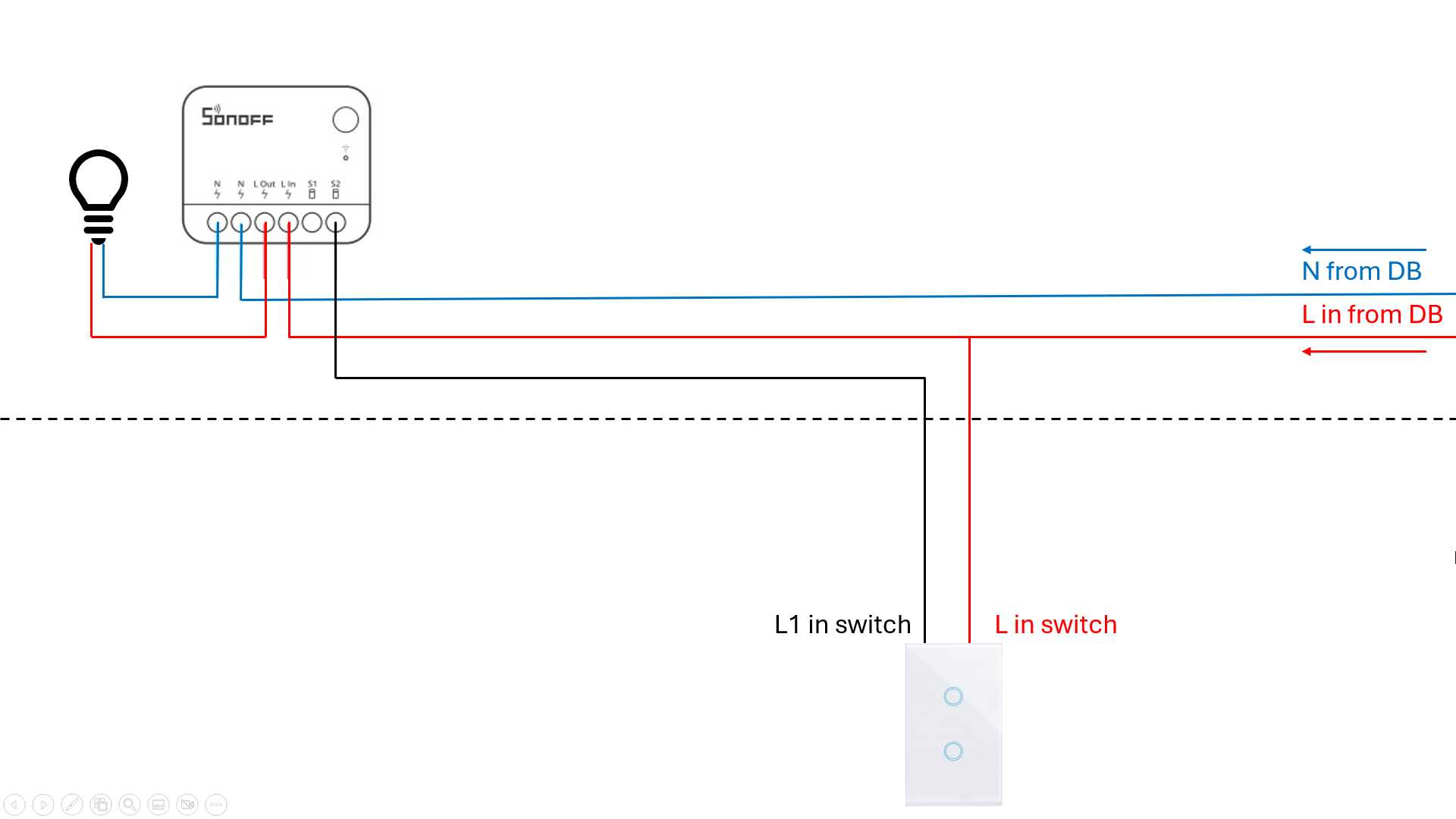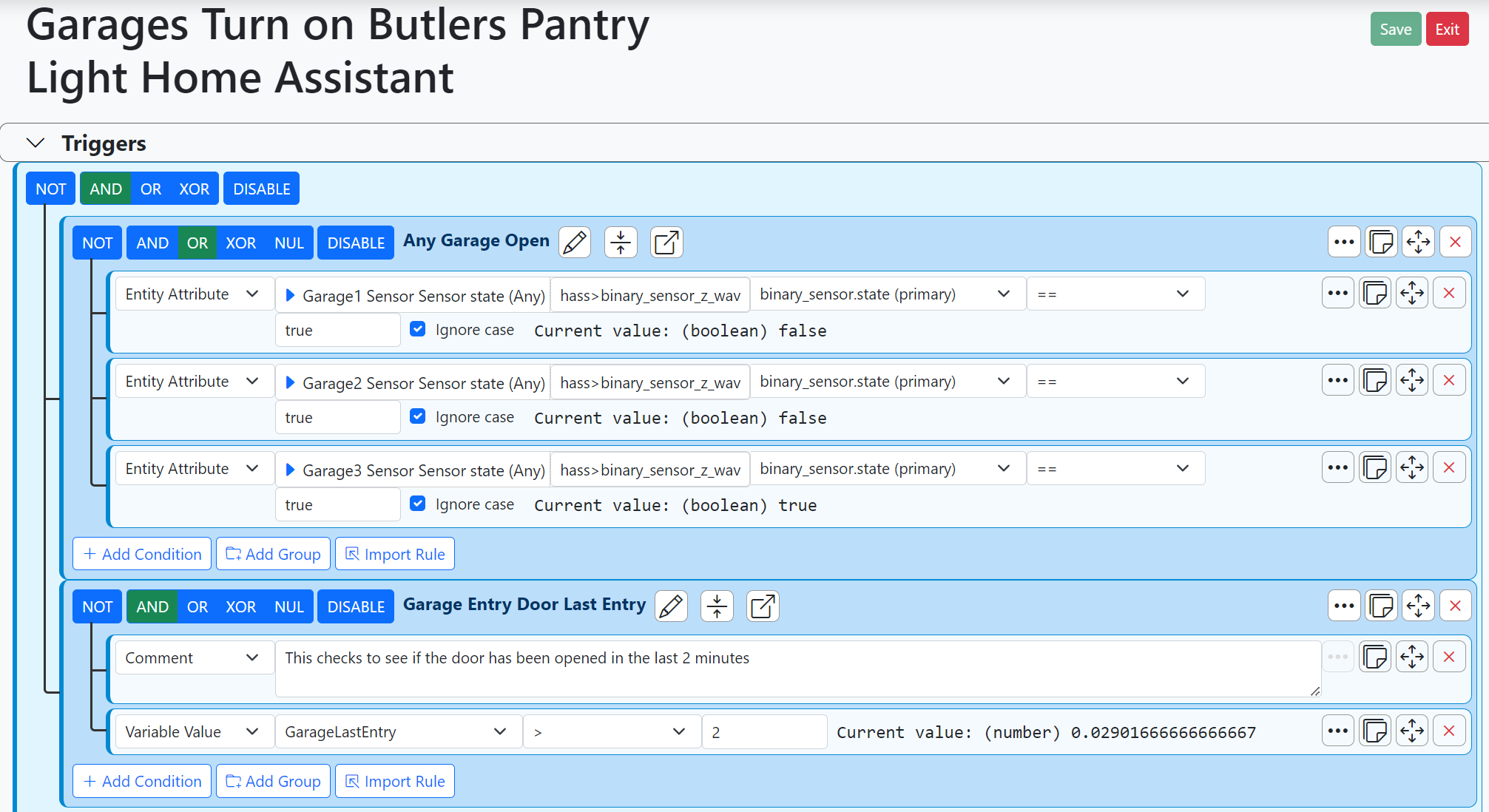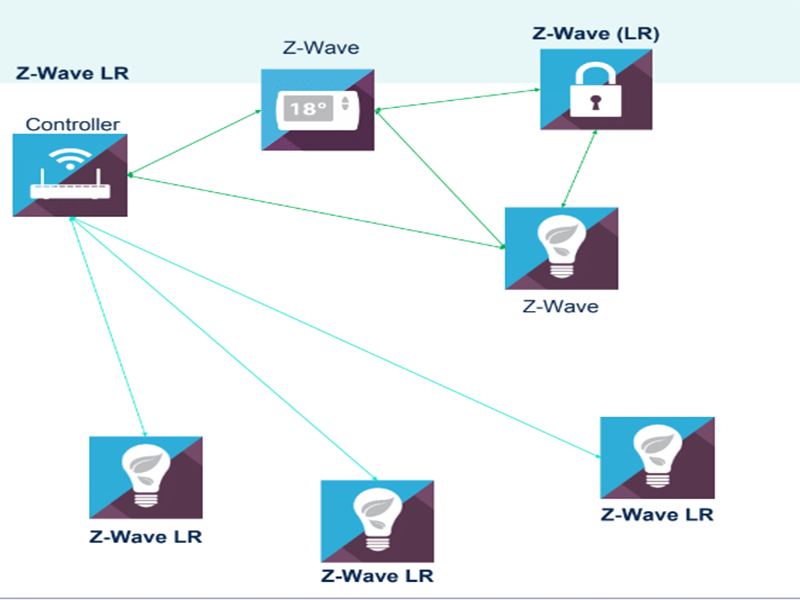Z-Wave Plus (ZWP) & Z-Wave Long Range (ZLR)
-
I've only recently read that ZLR is not a mesh network, below is quoted from Dr Zwave, which I found interesting and opens up a range of questions. I had assumed that ZLR was similar to ZWP, but it isn't.
Z-Wave Long Range supports FLiRS types of devices but it doesn't support Associations. Z-Wave Long Range is a star network so all communication has to go thru the hub. Then the hub forwards the message on to the FLiRS device after Beaming to wake it up. There is no way for a Long Range end device to send a frame to another end device, it has to go thru the controller.
I found it interesting that Associations have been given the 'flick'
My question is regarding the compatibility of ZWP & ZLR in the same network.
From my understanding ZLR devices can't communicate directly with ZWP devices, this could get interesting as it seems to indicate that there is no backward compatibility.
Perhaps Z-Wave has abandoned Mesh networks and is working towards simpler systems?
Any thoughts? -
I've only recently read that ZLR is not a mesh network, below is quoted from Dr Zwave, which I found interesting and opens up a range of questions. I had assumed that ZLR was similar to ZWP, but it isn't.
Z-Wave Long Range supports FLiRS types of devices but it doesn't support Associations. Z-Wave Long Range is a star network so all communication has to go thru the hub. Then the hub forwards the message on to the FLiRS device after Beaming to wake it up. There is no way for a Long Range end device to send a frame to another end device, it has to go thru the controller.
I found it interesting that Associations have been given the 'flick'
My question is regarding the compatibility of ZWP & ZLR in the same network.
From my understanding ZLR devices can't communicate directly with ZWP devices, this could get interesting as it seems to indicate that there is no backward compatibility.
Perhaps Z-Wave has abandoned Mesh networks and is working towards simpler systems?
Any thoughts?This is quite confusing.... From this announcement, it is supposed to be backward compatible.
I note the Beaverton, OR location which is beyond local to me... it is a stone throw away from where I am.But then this article clearly states exactly what you spoke about.
Then the engineer in me starts frowning. The way I read this new spec is: range is increased by the RF TX power of the device. A major no-no. why? Because it means much more cross network interference, device detectability (security anyone) and less efficient air-time. It does have a dynamic PHY power to make up for this but I would still be very uncomfortable with it and the use cases for which this would be beneficial would be very limited (to be nice... most likely none). I can imagine an edge device from my neighbor having to beam at full power, overshadowing all my devices causing all kinds of disruptions. One main benefit of the mesh concept is that each device range is very limited and therefore will not interfere with others. Certainly extending the RF range of my devices by jacking up the PHY output power is not a anything I am looking for. If it was improving the RX sensitivity I would be all in.
On the other hand the star network simplifies the routing of course and reduces the need for repeating signals and potentially free up air time but it breaks route redundancy and as I said, the power will increase interference within the network and cross networks. Not a fan... -
Associations are not possible with ZLR, it all makes sense to me now.
I was recently contacted by a manufacturer who supplies us with Z-wave Plus Dimmers, the GEN 5 has Associations, which is useful in grouping dimmers and works extremely well.
After reading the product spec's I couldn't find any information on Association Groups in the G7 and voiced my concerns to the manufacturer.
Now I know why, GEN 7 doesn't support mesh, so much for backward capabilities, EZLO's new hub is useless unless you role out a new and different Z-wave system.
I'm now wondering why I'm even bothering with Z-wave and why not just go for Zigbee and WiFi....... -
Associations are not possible with ZLR, it all makes sense to me now.
I was recently contacted by a manufacturer who supplies us with Z-wave Plus Dimmers, the GEN 5 has Associations, which is useful in grouping dimmers and works extremely well.
After reading the product spec's I couldn't find any information on Association Groups in the G7 and voiced my concerns to the manufacturer.
Now I know why, GEN 7 doesn't support mesh, so much for backward capabilities, EZLO's new hub is useless unless you role out a new and different Z-wave system.
I'm now wondering why I'm even bothering with Z-wave and why not just go for Zigbee and WiFi.......@black-cat said in Z-Wave Plus (ZWP) & Z-Wave Long Range (ZLR):
Now I know why, GEN 7 doesn't support mesh, so much for backward capabilities, EZLO's new hub is useless unless you role out a new and different Z-wave system
If that’s true I know understand why they want to use multiple controllers together. No mesh means that large properties will not be easily supported. I’ve placed my unit centrally, but some nodes are not directly reachable and the mesh is doing its job.
-
The more I think about it and the more horrified I am by this "long range" approach. I see the benefit of eliminating the whole routing and topology management but this is coming at the cost of humongous increase in noise and likely degradation in reliability due to lack of redundancy of edge device signals and difficult management of packet collisions. As I said in my previous post, it makes also the devices more detectable from longer range which makes your network easier to hack. I will write a note to the alliance... One of the key benefits of z-wave for me was its low range. Jacking up the TX power from -1dB to up to +30dB is not a feature I want to see. For those who play with their wifi network, they should also know that optimizing one's wifi is to try to lower the TX power as much as possible in order to increase bandwidth. It is to avoid the cacophony of multiple devices screaming at the controller with megaphones at the same time.
-
More on this from the hubitat forum:
Apparently it occupies a different channel so that's how the compatibility is retained. There are some marginal cases with devices being out of range where this could be helpful but all in all, I still think it is a horrible idea for most installations. Granted it simplifies some setup from not having to keep track of mesh routing or for example being able to include from a different location than the final location where the device will be but, at least from my observations, interferences and air time are the top source of reliability and latency, especially on a large network and freeing up the controller's air time is key to improving reliability. Long range would do the opposite. It is however for now not meant to convert the entire network but only an additional option.



 Hubitat and Z-Wave Long Range
Hubitat and Z-Wave Long Range
